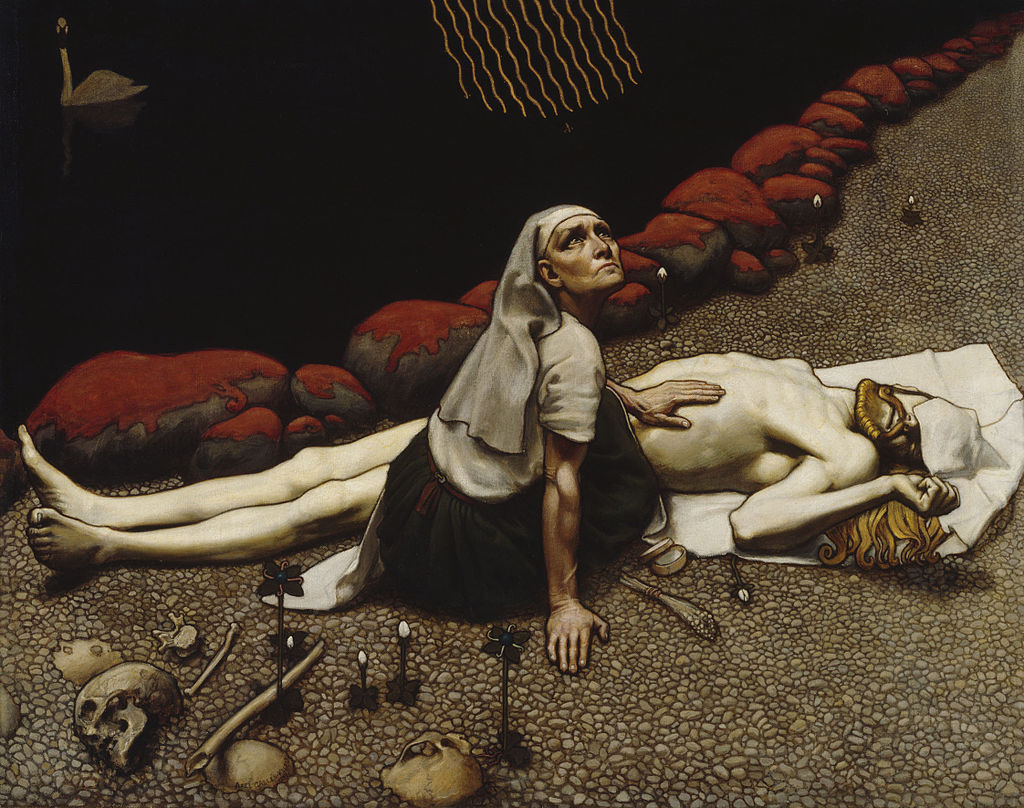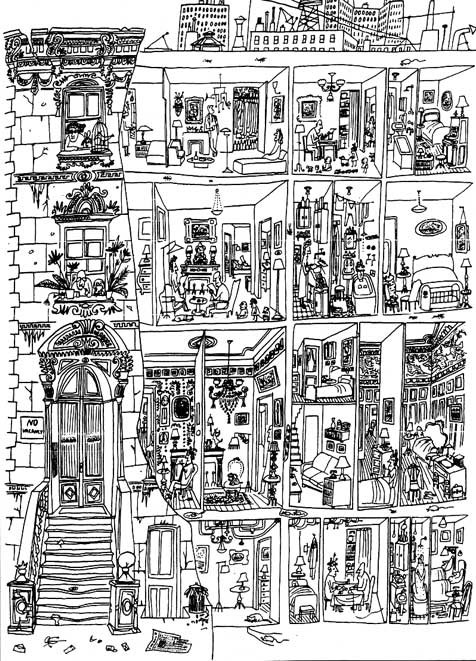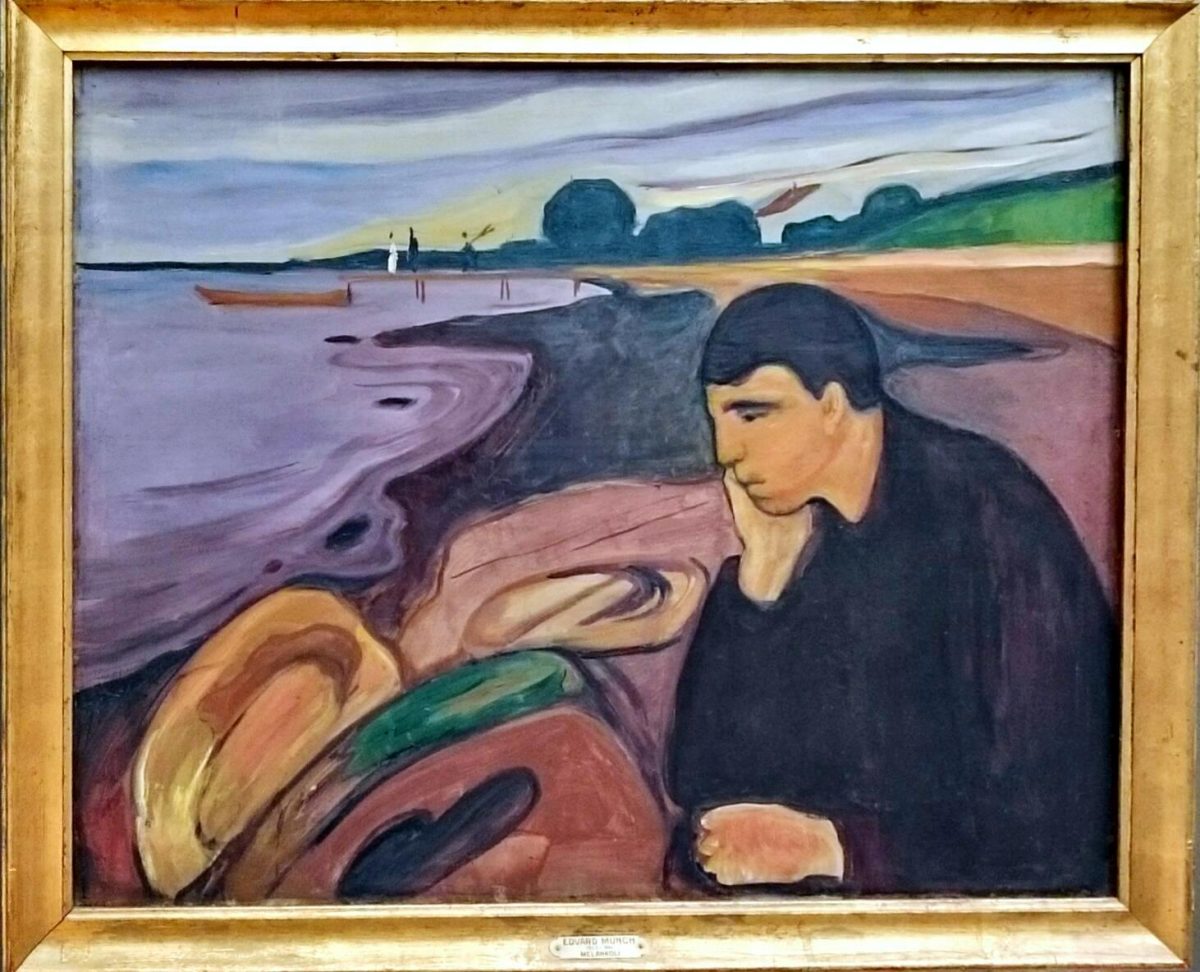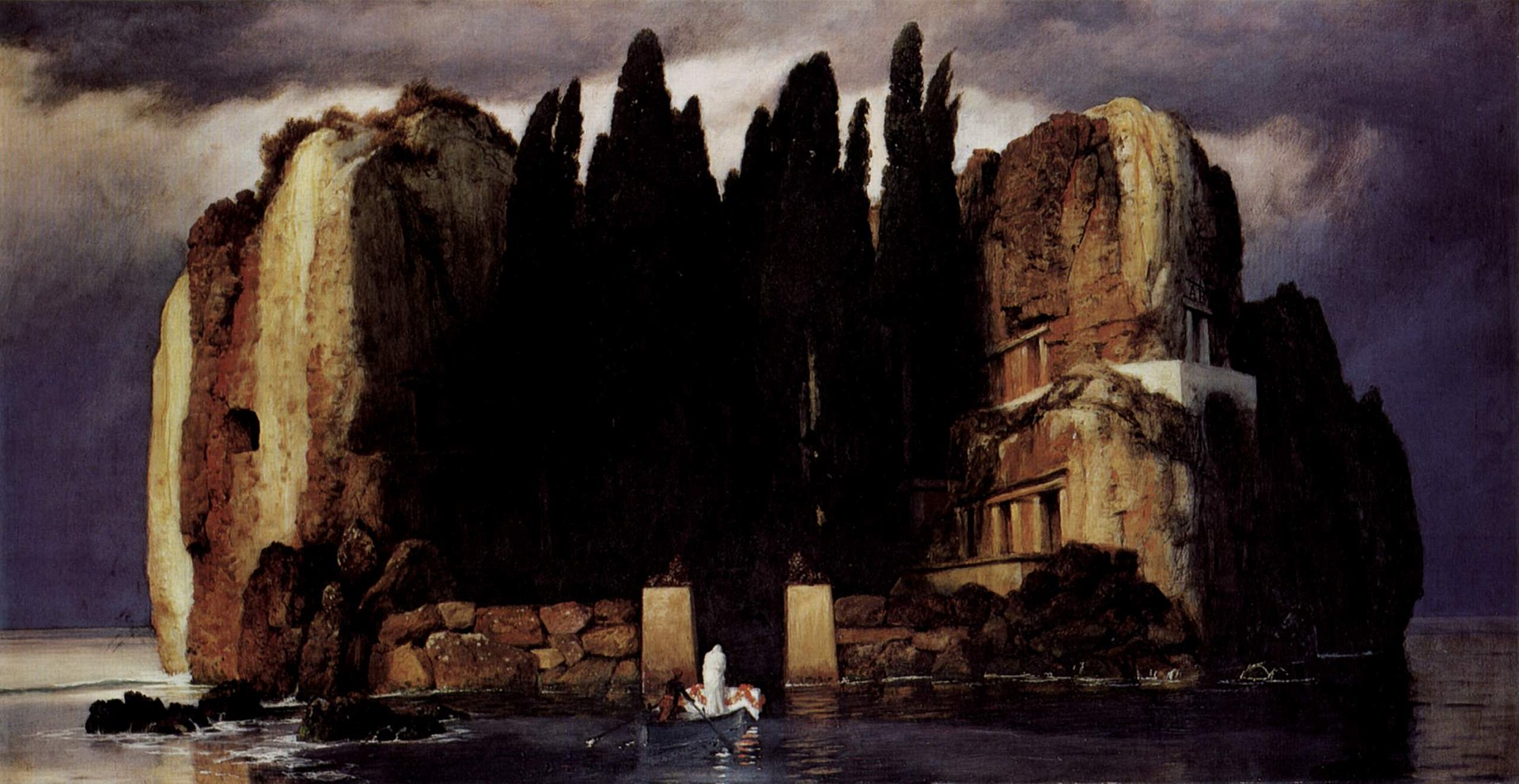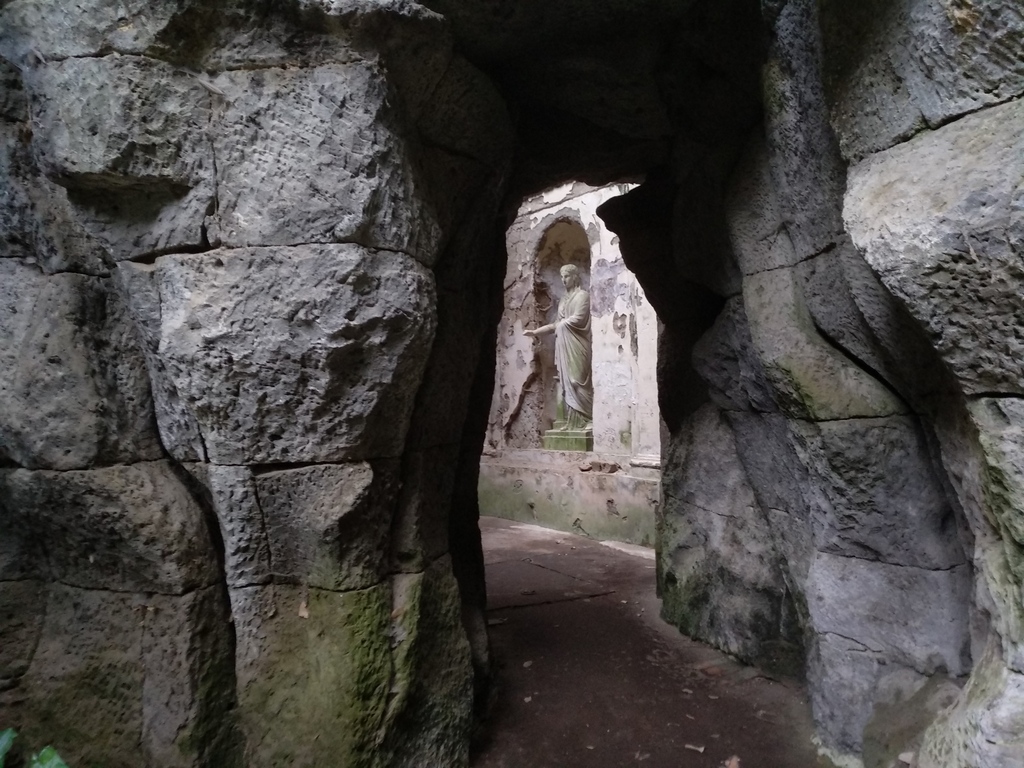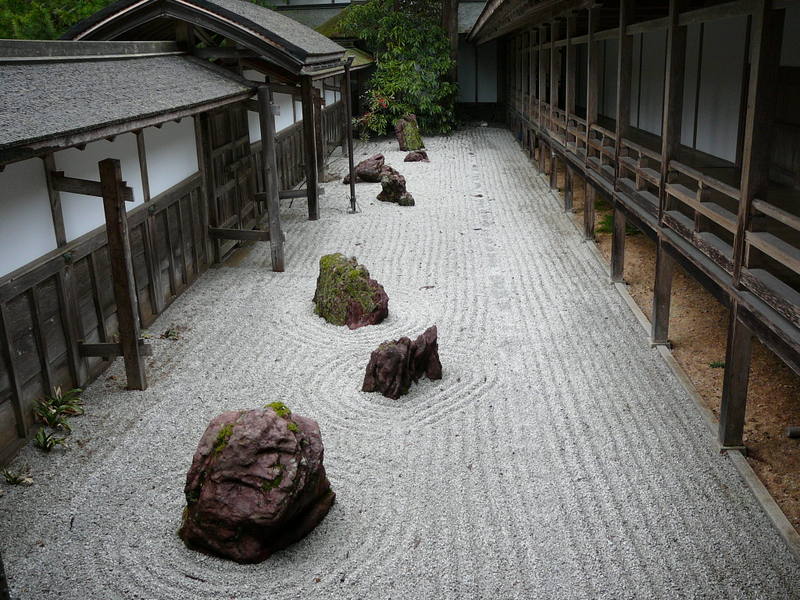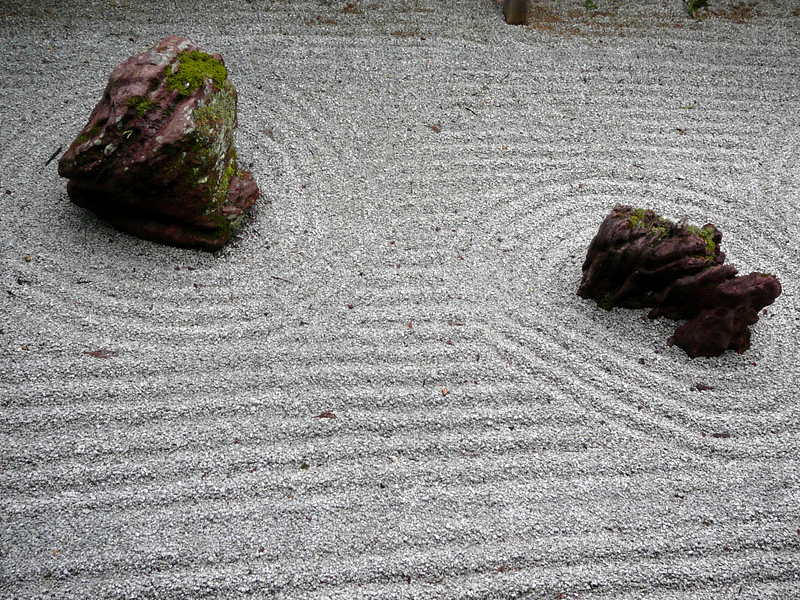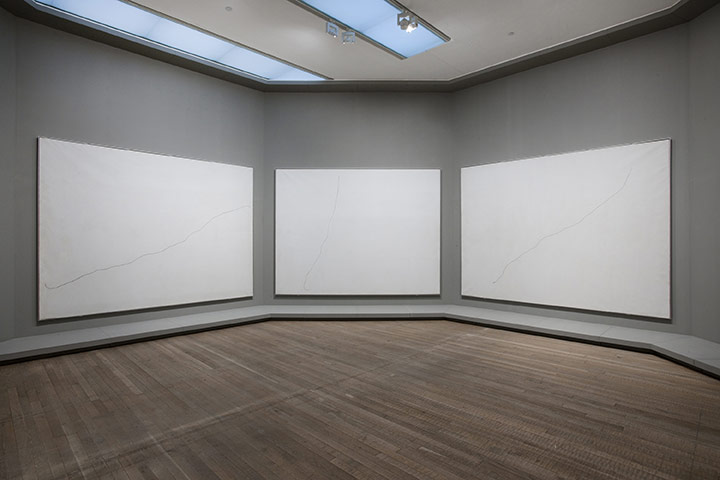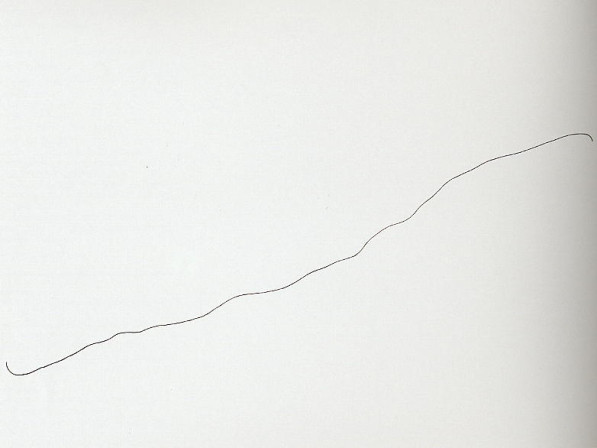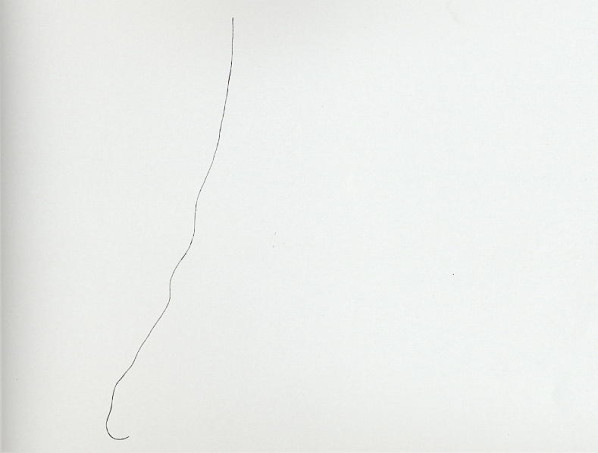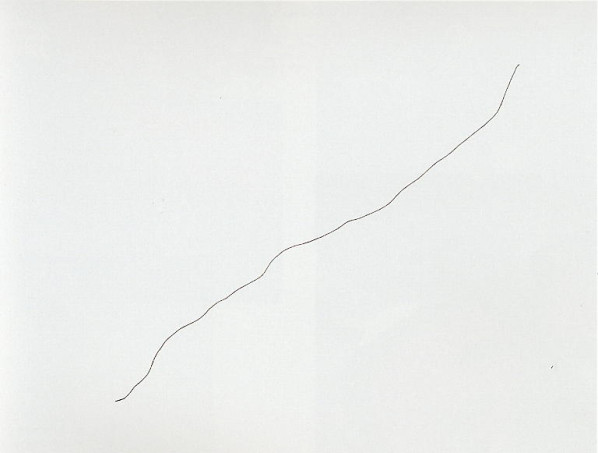JCJ Arxius
Recorregut: Infantesa, Adolescència. Adult1. Adult2. Adult3.
Biblioteca illa deserta. Recursos museu
Infantesa
Contes, Pinotxo, Kasperle, Jim Botón i Lucas el Maquinista, Enid Blyton. Teban Sventon. Contes de fades d’Arthur Rackham. Stevenson La Illa del Tresor. Daniel Defoe Robinson Crusoe. Rebelión en la Granja. Explorant la biblioteca de casa.
Adolescència
Primeres lectures dels clàssics grecs, Juli Verne. Herman Hesse, El Lobo Estepario. Kafka. El llibre del Te. Explorant la biblioteca de casa, CPVE del carrer Gran, CPVE Sarrià sortint d’escola, Nova Biblioteca Lesseps (Enciclopèdia espasa, llibre alemany de manualitats). La llibreria Herder i llibreria Francesa. [majoria de textos en castellà per la dictadura]. Biblioteca de Sant Pau. Universitat amb els discos.
el dia dels trífids john wyndham
Adult 1, 1982-1999
Començo a recollir cites. Poesia catalana, policíaques, clàssics grecs de drama i lírica amb cites anotades en paper i després a l’ordinador, Italo Calvino 1. La illa del Tresor llegida a les nenes. Mirant grans llibreries en els viatges a París, Londres o Alemanya. El nom de la rosa.[formació de la biblioteca, compra intensa de llibres] [la sensació de petitesa a la biblioteca de lletres de la universitat]
1988
Michael Ende, Mono. Tolkien, “El senyor dels Anells” (llegit seguit durant una grip amb febre que em feia somniar).
1989
Les set tragèdies de Sòfocles. Jane Austen, Pride and Prejudice. Thomas Hardy, Tess dels Ubervilles. Pèndol de Foucault Umberto Eco. Tom Sharpe, Wilt. M. Ende, Momo. Anne Marie Villefranche, “Placer de amor”. John Le Carré, La casa Rússia.
Compra del Diccionari de filosofia de Ferrater i Mora. Clàssics de filosofia en català [els publicats fins el moment]. Comanda a DOVER [què?]. Llibres de poesia catalana (Carner,Maragall, Verdaguer i Guerau de Liost), de cançons populars catalanes.
1990
Umberto Eco, “El pèndol de Foucault”
1991
Llibres de jardins: Gardenkunst, Paradeisos, 300 jardins de France, i també Edward Hopper, Alvaro Pombo “El metro de platino Iridiado”, Atlas d’història, Enciclopèdia Larousse, Néstor Luján “Una folla jornada” i Panofsky i Saxl “Saturno y la melancolía”.
1992, 1993 no consta
1994
He llegit llibrets de Carpentier, Borges, Baroja, Walden 2 de Skinner, m’he subscrit al National Geographic Magazine, Dinotopia, Bukowski i el Hölderlin de Pierre Bertaux, Caos, “Ideas sobre la Complejidad” de Wagensberg.
1995
El paisatgisme a Catalunya, Iconografia filosòfica. La diversitat de Cavalli-Sforza, Obaba de Bernardo Atxaga, National Geographic, Guia GR11, Hiperió de Hölderlin, Foix i Verdaguer, La Tabla de Flandes, Los hijos del Grial.
1996
Helena Lubienska de Lenval, El Silenci; Jostein Gaardner, El Món de Sofia; Montserrat Roig, Digues que m’estimes; Reverte, La piel del tambor; Miquel de Palol, El jardí dels set crepuscles; Italo Calvino, Si una nit d’hivern un viatger; William Gibson, Neuromancer.
1997
Contes curts de Kapeck, Musil, l’home sense atributs. Conrad, Victoria.
Puny de Déu Forsyte, el Lleó d’Àfrica Mahalouf. Cámara de Gas, El Jurado de Grisham. Llibres natura, El maestro de esgrima de Perez-Reverte. Antologia de Javier Marías.
1998
El quartet d’Alexandria, de Durrell, Memòries d’Adrià de M. Yourcenar, Chronos de Benford, Una antologia de Haikus japonesos, El diari de Nora Gil de Mercè Rius, La Peste de Camus, El corazón de las tinieblas de Conrad, La Veneziana de Nabokov, L’home que calculava de Malba Tahan(N), Mañana en la batalla piensa en mi, de Javier Marías, Ors, Oceanografia del tedi.
1999
Mrs Dalloway de Virginia Woolf. La Bíblia, llibres de l’apocalipsi, Job, Tòbit. Diderot, Jacques le Fataliste. Proust, Du coté de chez Swann. Lorca i Antología de la poesía castellana. Montalban: Carvalho. 7 anys al Tibet; Laura Pérez Esquivel, Como el agua para el chocolate. Harry Potter i la pedra filosofal. La forense Kay Scarpetta.
Adult 2 . 2000-2011
Lectura del quijote a la Mancha, Shakespeare en bici per Lleida completat en anys posteriors, Proust, Nabokov. Poesia xinesa. [transició a llegir només en català i anglès, en castellà només originals]
2000
El Quijote al viatge a la Mancha, primera vegada que dedico temps en exclusiva a llegir. Proust, À la Recherche du temps perdu. Tabucchi, Sostiene Pereira.
Poesia: Kavafis i Pessoa. Harry Potter 2 i 3, ciència ficció de Ender, el Médico de Noah Gordon, les excel·lents novel·les de la Kay Scarpetta, Christian Jacq. Llibre de vestimenta masculina pel bagul escriptori de viatge de Stravinsky.
2001
Completo “À la recherche du temps perdu” de Proust, La Prisonnière a l’hivern, Albertine Disparue a la primavera i Le temps retrouvé a l’estiu. El monte Ararat de Yamad Kemal i uan antologia de les 1001 nits a propòsit del viatge a Turquia. L’antologia de contes sobre cavalls i la crítica literària de Harod Bloom. Novel·les policíaques de Montalbano, PD James, Mary Higgins. El Harry Potter 4.
2002
Italo Calvino: Les ciutats invisibles. Arundanati Roy: El déu de les coses petites. Quim Monzó: Contes. Franz Kafka: La metamorfosi. T.Harris: Hannibal. Saul Bellow: Ravelstein. Xavier Benguerel: Icaria, Icaria. Stendhal: Le Rouge et le noir. Nabokov: Ada o l’ardor. Tanizaki: Elogio de la sombra. Steiner: Nostalgias del absoluto. Chesterton: Father Brown. Antologia de Haikus.
PDJames: Pecado original, Sabor a muerte. Ann Perry: Los escándalos de Fleet Street. PD James: Sabor a muerte. Forsythe: El manifest negre. Reverte: La Carta Esférica. Chester Himes. Elizabeth George. Donna Leon: Guido Brunetti.
2003
Cites de Sòfocles. Shakespeare (Romeo and Juliet, Richard II, Summer’s Midnight Dream, The merchant of Venice, King John).
Saul Bellow (L’autèntica), Paul Auster (trilogia de NY), contes de Raymond Carver, Sinuhe, Nagib Mahfouz, Guerau de Liost, Artur Schnitzler (Traumvolle, Srta. Elsa), Versions de poesia antiga de Segimon Serrallonga, lectura Haikus, Pere Schlémil, Helen Hanff (84 Charing Cross), Juniziro Tanizaki (la clau), El Incal, Conrad (Nostromo), Celan. Como ver la arquitectura de Bruno Zevi.
Polis (Scarpetta, Camilleri, E. George, Forsythe, Mendell, Sapowski, PD James, Stanislaw Lem),
2004
Shakespeare: Henry IV a la tardor, Henry V el maig, Much Ado about Nothing, El rei Lear, La tempestat, As you like it. Nabokov, Parla memòria, L’encantador, Pnin, Foc Pàl·lid. El Contrabaix de Susskind, Vides d’animals de Coetze. Sebald, Vértigo. Cercas, Soldados de Salamina. Borges, Aleph. Poesia: Benguerel, William Carlos Williams, Ted Hughes. Walt Whitman. Sara Paretski, Bruixes de Terry Pratchet. PD James. John le Carré, el Jardiner Constant, Patrick O’brien. Patricia Highsmith, Tom Ripley. Chandler, la dama del llac. Simenon, l’home que veia passar els trens. El Codi da Vinci. New Yorker. Una edició antiga de “tres anglesos s’esbargeixen”, Catalunya des de l’aire.
2005
Shakespeare: Twelfth night, Juli Cesar, Hamlet. Odes de Píndar. Nabokov: Parla memòria (per segona vegada), Contes. Coetzee Esperant els bàrbars. Poesia xinesa. El somni de les mansions vermelles, Històries del Jutge Dee (Van Gullik). Llibre “Maquinaria pesada”. La Sombra del viento. Petros Markaris. PDJames. Autostopista galàctic, Harry Potter.
2006
Els aforismes de Zurau de Kafka (regal de la Maria). Memòries d’una Geisha. Reprenc la lectura de Shakespeare: Troilus i cressida, Està bé si acaba bé, Mesura per mesura a Londres, Othello a casa, el rei Lear i Macbeth a Santander.
Japó: Botchan de Natsume Soseki, Lord of Musashi de Tanizaki Junichiro, Norwegian Wood de Murakami Haruki.
Policíaques de Mankell, Rayuela de Cortázar. I en literatura americana, Seize the day i Augie March de Saul Bellow, i el Sebastian Knight de Nabokov.
2007
He acabat de llegir totes les obres de Shakespeare, Antony i Cleopatra, Coriolà, Timó d’Atenes, Pericles, Cymbeline, Un Conte d’Hivern, La tempesta, Enric VIII. Dumas, Els tres mosqueters. Tales of Tao Immortal. Yukio Mishima, El rumor del oleaje. .Dickens, Picwick. Hoffman. L’elixir del diable. Chrétien de Troyes, El Graal. Lahiri, Jhumpa, L’intèrpret d’emocions (Índia que viu als USA). Paul Auster, Brooklyn Folies. Nature Girl. Flaubert, Mme Bovary, Flaubert. Salinger, el guardià del camp de sègol. Rabelais, Gargantua i Pantagruel., William Dalrymple, La ciutat dels Djinns . Orhan Pamuk, Rojo..Mahabarata, Narayan. Poesia de Tagore.
McCallsmith, Friends lovers and chocolate. Ian McEwan, Saturday. Margaret Truman, Muder at Union Station. Noll, Ingrid Die Aphotekarin. Connolly mujer cemento, Andreu Martin, Les claus.
Jeff Hoke Museum Lost Wonder. Confessió PLluis.
2008
Kafka America, Grossman, Vida y destino, Kafka, el procés. Joyce, Portrait of the artist as a young man, Ulysses. Luisa Castro, la segunda mujer. Erich Kästner, Emil und die detektive. / Noah Gordon, El celler. Contes de Nete, Frank Schatzing, Contes de Salinger, Der Schneeman. Noveles policíaques en alemany, acabat Tatort, Joyce, Teresa Solana, Crim imperfecte. / Poesia Angel Gonzalez. Els Codexs.
2009
Llull. Llibre de meravelles. Goethe, FAUST (decebedor). Francesc Pujols, Hiparxiologi. Robert Burton, Anatomy of melancholy. BALLARD, Vermilion Sands. Julian Barnes Talking. VilaMatas, el libro asesino. Delibes La sombra del ciprés es alargada. Philipp K Dick. The Three Stygmata of Palmer Eldritch. Roberto Bolaño. Los detective salvajes (que abandono). Cortázar, el perseguidor. Isabel Allende Casa Espiritus. Melville, Bartleby, Narracions curtes, Benito Cereno, Las Encantadas.L’elegància de l’eriçó, Muriel Barbery. Narracions curtes. Policíaques. Perú: policiaca, Fernando Ampuero. Bryce Echenique: Un mundo para Julius. Ernesto Ferrini, La tristeza de los burros. Vargas Llosa: Pantaleon y las Visitadoras.
Poesia: Vicent Andrés Estellés, Coral Romput.
2010
KSP Saturn o la Melanconia. Gènesi, Èxode, Levític. Els Elements, llibre de química. Colonna, El somni de Polífilo. Steiner, 10 raons per a la tristesa del pensament. Sum Eagleman.
Melville, Billy Budd. Karin Michaels, Bibi, una noia del nord. Màrius Torres, Poesia. Ballard Cocaïne Nights. Murakami. Córrer. Jesús Moncada, Camí de Sirga. Ian Rankin. Mccallsmith, 44 Scotland st. Alice Munro.
Rússia: Tchejov, narracions, el nen, Kashtanka. Montserrat Roig, l’agulla daurada. Gogol, Històries de st. Petersburg, Nevsky Prospekt. Pushkin, Narracions.
2011
Tornant de Rússia: Pushkin, Narracions. Boris Akunin, La conspiración de Moscú. Bulgakov, El maestro y la margarita. Antologia de poesia russa, llibret. Contes de Thekhov. Tot Salvat Papasseit i l’antologia de Maragall. Murakami, De què parlo quan parlo de córrer. Els dos Incals. He mirat al balcó el llibre sobre l’Evolució. De Maistre, Voyage Autour de Ma Chambre. James Ellroy, Desierto. Michael Connelly. El psicoanalista. Melville, Moby Dick, m’ha costat temps, l’he acabat a l’estiu.
Assaigs importants: Pogue Harrison, Essay on gardens. Mnemosyne d’Aby Warburg. Steiner, Errata. Herman Hesse. Projecte de llegir la Bíblia, llibre de Job.
Adult 3 2012-2027
[Kindle] [les llibreries han deixat de semblar portes a móns desconeguts, camins a seguir i semblen només habitacions que ja he recorregut i que en general, no m’aportaran gaire. Amb l’excepció de la Britànica, miro més internet i la wikipèdia que no pas consulto la biblioteca]
Burton anatomy of Melancholy, El somni de Polífilo, Gorssman Vida y destino, Lectura de la Divina Comèdia en 3 dies a Barcelona, Les metamorfosis d’Ovidi, alícia en Terra de meravelles. Borges. El Canon Pali.
Tardes llegint poesia xinesa a la terrassa.
Intent de memoritzar poesies. Els quaderns de butxaca
2012
Haurà estat l’any del Kindle i de la subscripció al NewYorker.
Spinoza. Etica. Bloom, Donde está la sabiduría, Alex Ross: The rest is noise. Karen Armstrong: Una historia de Dios. Bíblia: Llibres sapiencials, Isaias, Proverbis. L Foix, diari de 1918.
Kerouac: On the road, The Dharma Bums. Shibumi, Trevanian, L Don Winslow, Satori. Ubik de PKDick. Negra nòrdica. Per Islàndia: sagues i Harold Laxness.
2013
La Divina Comedia. Les Confessions de S. Agustí, manífics llibre X i XI sobre la memòria i el temps. Rousseau, Les reveries du promeneur solitaire.
Rilke. Espriu, cementiri de Sinera. Ariadna al laberint grotesc. Edicions d’Espriu i Ungaretti.
Abraham Verghese, Cutting for Stone. Karel Kapek, l’Any del jardiner. Sackleton, South. McallSmith, The Charming quirks of others. Jaume Cabré, Jo Confesso.China Mieville. La estación de la calle perdido. Yasutaka Tsutsui, conte angoixant. Don winslow, The Loo sanction, The power of the Dog. Scerbarenko. deKok, Assassinats a Amsterdam.
2014
Calvin i Hobbes, obra completa. Textos Pali sobre meditació a Tailàndia. Bree Wilson, Consider the Fork. Malraux, le Musee imaginaire. Poesia de Joan Vinyoli.
2015
Aprendre poesies de memòria a la feina (Thomas Hardy, Pere IV, Maragall). Lydia Davis (narracions curtes i molt depurades), Sándor Márai l’estranya, la gaviota. Roger Pol-Droit 101 experiencias de la vida cotidiana, Joel Dicker Harry Quebert (sobrevalorat). Jordi Cots Moner, La Convenció. Kenko no Chomei. Sant Juan de la Cruz. Nele Neuhaus. Schneeberger must sterben. Truman Capote, Breakfast at Tiffanys. Sergi Pàmies, contes. Trollope The trhree Clerks. Chester Himes, Blind man with a Pistol. Edmund Crispin, mosca dorada. Maj Sjöwall, El hombre que se esfumó. Alex Lemaitre.
2016
Lectures: Kamo no Chomei Hojoki, Kenko Essays on Idleness, Liu Cixin Three Body problem, Lewis Carroll, Alice in Wonderland [lectura per Barcelona], Flannery Oconnor , Italo Calvino. Les ciutats invisibles. I racconti , Robert Galbraith: Cormoran Strike, Neruda i Borges a la Patagònia.
2017
La gran lectura de l’any han estat els contes de Txékhov al llarg del viatge amb la furgo. A més, Natalia Ginzburg Le Piccole Vertu. Italo Svevo, La coscienza di Zeno, decebedor. Olga Tokarczuk, Sobre los huesos de los muertos, molt original. Stanislav. Lem Solaris. Mercè Rodoreda, Mirall Trencat. Sherman Alexie. Golem, Isaac Bashevis Singer.
Samanta Sweblin, Julian Barnes Nothing to be frightened of. Alguns contes de Prudenci Bertrana. Nabokov, Transparent things. Eckart Tolle, El poder del ahora.
Policíaques: Philip Kerr, la trilogia de Berlin. PD James. Jo Nesbo i la sèrie de Harry Hole. Zigmund Miloscevsk,i fiscal Scazi.
2018
Assaig: Dawkins. The Selfish Gene. Epictet i Marc Aureli. Rebecca Solnit, A Field Guide to Getting Lost, Wanderlust. Camus, L’Étranger, Le mythe de Sysiphe, La Peste. jlBadal: les coses que realment han vist aquests ulls inexistents. Hawking a Brief History of Time. John Gray. The silence of animals.
Georges Perec: La Vie Mode d’Emploi. Benjamin Black i PD James amb la sèrie Dalgliesh. Alexander McCallSmith, The Sunday Philosophy series. Saramago, el Evangelio según Jesucristo.
Auden. Baudelaire, Les Fleurs du Mal. Josep Palau i Fabre, poesia. Wallace Stevens.
2019
Auden i Poesia Xinesa. Il Danubio, Claudio Magris.
À rebours, Huysman. Atlas Shrugged, Ayn Rand. Elena Ferrante. Israel: Batya Gur, Daniel Silva, Gabriel Allon.
2020
Poesia a la terrassa: Auden i Hölderlin. Lucreci, De la Natura. Steiner, The Poetry of thought. Douglas Adams Hitchhiker’s guide galaxy. Station eleven, Emily st Mandel. Conversations, Sally Rooney. A wrinkle in time, Madeleina l’Engle. Bend Sinister, Sebastian Knight Nobokov. Novel·les policíaques i de la cua de palla.
2021
Novel·les de la cua de palla. Policíaque, amb tot John Le Carré. P.K.Dick Ubik. Do androids dream of Electric sheep.Palmer Eldricht. The man in the high castle.Robert Walser Der Spaziergang. Susanna Clarke, Piranesi. Virginia Woolf, Mrs Dalloway. John Waters: 101 things I hate. Poesia: Hölderlin, Rilke. Assaig: Tristan Gooley. How to read Water. Sun Tzu, l’art de la guerra. Darwin Wallace, la lluita per la vida. Cavalli-Sforza, Qui som, història de la diversitat humana. Horace Walpole, El arte de los jardines modernos.
2022
Dostoievsky Karamàzov. Murakami, Balla balla balla, Wind-Up Bird, 1q84. Ha Jin, la Espera. Oliver Sacks, Musicophilia, Tales of Music and the Brain. J.E. Gardiner. Bach, music in the castle of heaven. Julian Barnes, The Man in the red coat. Dovlátov, La maleta. Philip Roth, Goodbye Columbus. Edmund Burke, A philosophical Inquiry into the origin of our ideas of the Sublime and Beautiful. Marcel Danesi, Semiotics. Kashuo Ishiguro. Klara and the Sun. Les mil i una nits. Marco Polo, Il Milione.
Sonets Orfeu al sofà. Jazz Life. Infografia. Terrassa, Poesia Xinesa. Virgili, Bucòliques.
MccallSmith The World according to Bertie, The unbearable lightness of scones, The importance of being Seven, Bertie Plays the Blues. Becky Chambers, A Closed and Common Orbit, A long way to a young, angry planet. Lindsey Davis, Marco Didio Falco 1, 2, 3. Jeff Hoke. Leaping through life
2023
Cormac Mccarthy, The Passenger, Stella Maris. Nabokov, Insomniac dreams. Annie Ernaux, Passion Simple. Zeina Abirached, El piano Oriental. Kurt Vonnegut, Slaughterhouse five. Cortázar, La vuelta al día en 80 mundos. Fred Uhlman, L’amic retrobat. Quincey, Confessions of an english opium-eater.
Alexander McCallSmith. Bertie’s guide to life and mothers, The revolving Door of Life, The Comfort of Saturdays, The forgotten affairs of youth. Dror Mishani, Tres. Donna Tart, The Secret History. Martin Cruz Smith, Estrella Roja, Red Square. Thomas Harris. Silence of the Lambs, Thomas Harris, Hannibal. Marlon James, Black Leopard, Red Wolf.
Virgili, Geòrgiques, com un calendari del pagès. Horaci, odes i èpodes. Poesia xinesa.
Aldous Huxley, Doors of Perception. Hegel, la Raó en la història. Tibetan Book of the dead. Kathryn Schluz, Lost and Found. Schrödinger, What is Life, Mente y materia. Baghavad Gita.
2024
Robert Galbraith, The Running Grave. Empar Moliné. Benvolguda. Richard Osman, The Thursday Murder Club, The Bullet that missed. Ruth Galloway, Dying Fall. Alex Michaelides, Les donzelles, The Silent Patient. Dashiell Hammet, Red Harvest. Neal Stephenson, Snow Crash. Chris Offut, Country Dark. Sophie Kinsella, Undomestic Goddess. Percival Everett, The Trees. Thomas Pynchon, Vici inherent. Markus Sakey. Brilliance. Sara Paretsky, Indemnity Only, Windy City Blues, Killing orders, Deadlock.
Yoko Ogawa, Le musée du silence, La policía de la memoria. Vasco Pratolini Cronaca dei Poveri Amanti. La Bruyère, les Caractères. Manuel Mújica Laínez, Bomarzo. Capote, Breakfast a Tiffany’s. Elizabeth von Arnim, Vera. Georges Perec, La boutique obscure, 124 dreams. Upton Sinclair The Jungle. Henry Miller, Tropic of Cancer. Haruki Murakami, A la caça de l’ovella.
Llibre egipci dels morts. Salvador Dalí, The Secret Life of. Athenaeus of Naucratis, El Banquet dels erudits.
Al-Mutanabi, poesia. Lev Rubinstein, Here I am. Poesia Xinesa: Marià Manent, Com l’Aire daurat. Antologia de Tony Barnstone. Antologia de Guojian Chen. Antologia de DuFu. He transcrit la selecció de les lectures i n’he incorporat algunes al museu.
Col·lecció Illa deserta
[provisional]
[ El que més m’ha agradat, el que m enduria a l hospital, la guia de lectura que llegaria tim. La meva selecció d’un prestatge: Italo Calvino, Chejov, Nabokov]
Vassily Grossman: Vida y destino
Ovidi: Les metamorfosis
Bill Watterson: Calvin
El llibre de fades
El maravilloso viaje del doctor Acorta
El libre del Te
Nabokov: Ada, Speak memory
Borges
Pere IV: Tirallonga dels monosíl·labs
Maragall: Cant Espiritual
Thomas Hardy: Afterwards
Brenda Shaugnessy: I have a time machine
Els llibres que valoro com a objecte:
- Rotlles Japó
- De la pulcra ceniza (com capses de Marcel Duchamp)
- Les meves edicions de butxaca
- El llibre del Te Okakura Kakuzo
- Calvin obra completa
- El Coromines
- Britannica
- Projecte de gran incunable
La lectura al museu
32c Les meves cites | 422 Poetes i poesies | els llibrets, . Edicions de butxaca la llibreria,] biblioteques meves i del món.

